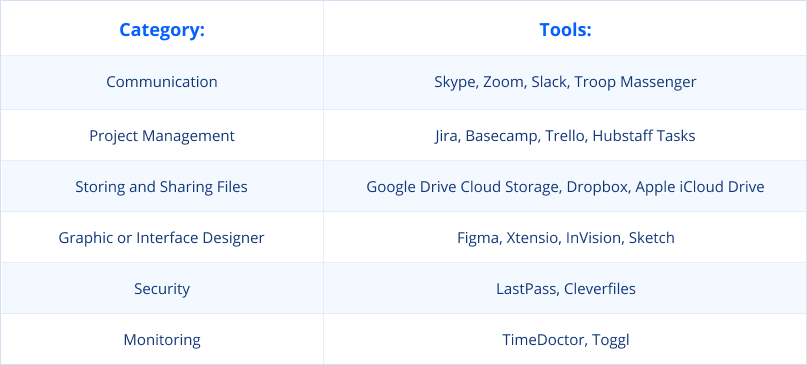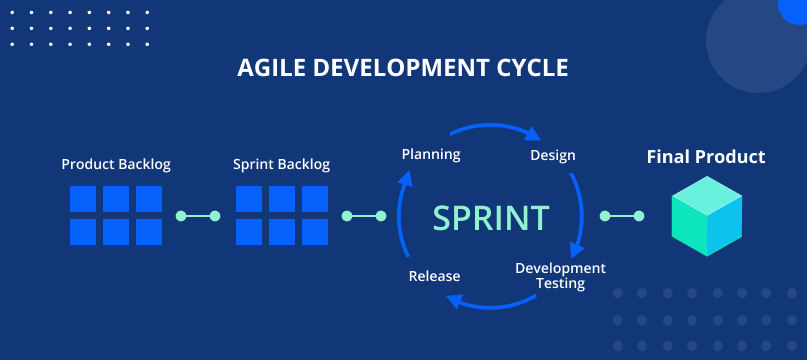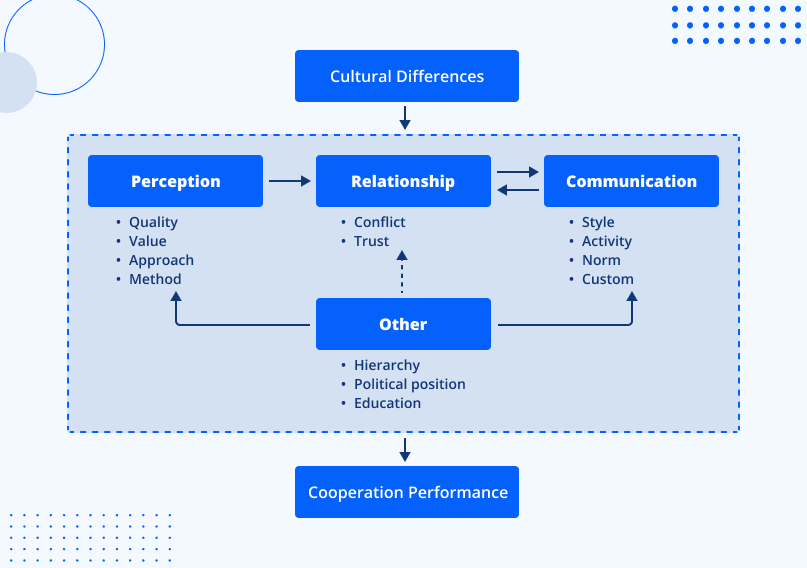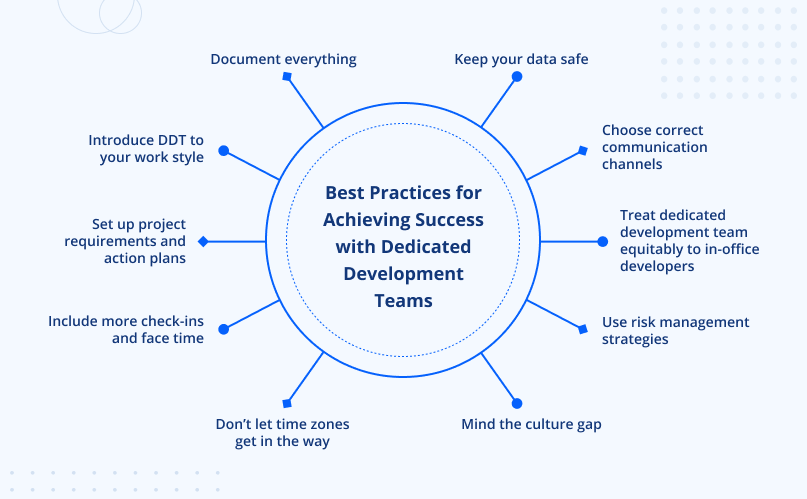The pandemic made many people admit that it is absolutely acceptable for developers to work remotely to create a software product. This shift in perception is one of the reasons why hiring a dedicated team is now a common practice.
It’s normal to feel insecure when you start working with a dedicated software development team. This article was created to decrease your anxiety and fears. We’ll cover the best practices of working with dedicated teams. The article might bring value for the ones already working with a dedicated development team, who are at the beginning of collaboration or consider starting.
- 1. Introduce DDT to Your Work Style
- 2. Set Up Project Requirements
- 3. Stop Believing in Telepathy
- 4. Choose Correct Communication Channe
- 5. Treat Dedicated Development Team Quitably to In-Office Developers
- 6. Use Risk Management Strategies
- 7. Keep Your Data Safe
- 8. Don’t Let Time Zones Get In The Way
- 9. Mind the Culture Gap
- 10. Document Everything
- In Summary
Introduce Dedicated Development Team to Your Work Style
“We often take for granted that when people join our team, they will intuitively know what to do, and will seamlessly assimilate into the culture, becoming productive almost immediately. This is not true.”
— Martin G. Moore, founder of Your CEO Mentor
What does the leader mean? Martin Moore speaks about employee onboarding. Developer onboarding is the process of introducing a new employee into the company and its culture. It also provides the new employees with the information they need to become efficient team members.
Adaptation will help avoid many problems that will take much more time if postponed. Too many leaders overlook the significance of adaptation, which is a vital step for developers to feel comfortable, enjoy their work, and deliver the results they expect.
There are certain steps you can take to make the process easier for the dedicated development team and get them up and running as soon as possible. In a nutshell, you should:
- present the idea of your project to your team;
- provide access to technical documentation;
- introduce the dedicated team to your in-house team.
Check the full checklist on how to help developers join your company in the Developer Onboarding Checklist.
Set Up Project Requirements and Action Plans
“It’s OK to have your eggs in one basket as long as you control what happens to that basket.”
— Elon Musk, CEO of Tesla Inc.; founder, CEO, CTO, and chief designer of SpaceX
What does the leader mean? Musk says to collect all the ideas for your project and structure them in your head. You need to make sure you don’t make a mess. Remember what your goal is and where each project idea comes into play.
If you’re hiring a dedicated team, you should let them know what your project is about and where it’s heading. The plan should include:
- Project description, goals, and objectives.
- Release deadline.
- Budget.
- Required developers’ skills.
Setting up project requirements and action plans offers several benefits for businesses when hiring developers:
1. Clear project requirements enable businesses to target their recruitment efforts effectively. This ensures that candidates with the right skills and expertise are identified and considered for the role.
2. By following a structured roadmap, businesses can streamline candidate evaluation, decision-making, and onboarding, reducing time-to-hire.
3. By attracting candidates who meet specific criteria and align with business needs, businesses can onboard developers who are more likely to contribute effectively to projects and initiatives.
4. Reduced time-to-hire, improved candidate selection, and lower turnover rates contribute to overall cost-effectiveness.
Setting up project requirements and action plans is instrumental in optimizing the hiring process for developers. It enables businesses to attract, evaluate, and onboard top talent efficiently, ultimately contributing to project success and business growth. As Elon Musk’s quote suggests, having control and strategic planning in hiring processes is key to achieving desired outcomes and managing talent effectively.
Stop Believing in Telepathy: Include More Check-ins and Face Time
If you don’t give people information, they’ll make up something to fill the void.
— Carla O’Dell, CEO, American Productivity and Quality Center
What does the leader mean? All project information is useless if you are the only one having it. Share the information and explain all the nuances. The more developers know about your project, the more they can do and the fewer misunderstandings you’ll face in the future.
Communicate with members of the dedicated team or leading PM on a daily, biweekly, monthly, quarterly basis, or whatever you find necessary or reasonable. Discuss whether they are succeeding in addressing their goals. Learn where they are and adjust the directions accordingly. If you want your dedicated team to succeed, you need to keep in touch and check on them regularly.
Note. Do not mix up checking a dedicated team with micromanagement, where you track people every minute. This is an unhealthy and toxic approach. Permanent supervision can make work unbearable and stressful for anyone.
Choose the Correct Communication Channels
I’m a great believer that any tool that enhances communication has profound effects in terms of how people can learn from each other.
— Bill Gates
What does the leader mean? Gates believes in talking to employees. You should provide feedback while talking to developers. Before emails were invented, people could only use paper letters, but now we have smartphones, computers, smartwatches, etc. We are lucky to live in a world where there are many ways to share information. Technology helped us.
Select communication tools to communicate with a dedicated development team. While choosing communication tools, you should mainly focus on the required functions. A common mistake is to choose different tools for different types of communication: correspondence, calls, and video conferences. If this is the case, part of the communication might be missed, and you will not be able to respond quickly to some questions.
Ask your dedicated team which communication tool is best for them to work with. You can definitely be sure that the team will not need extra time to get acquainted with the new service.
The most popular services include:
Treat Dedicated Development Team Quitably to In-Office Developers
“People are much more willing to give of themselves when they feel that their selves are being fully recognized and embraced.”
— Tim Cook, CEO of Apple Inc.
What does the leader mean? Tim Cook found that when people feel valued, they start feeling confident and do their best on the job. We would have no iPhones or Windows computers if there were no people working hard to create them.
The most common mistake executives make is that they treat the dedicated development team as someone to just help them get the job done. Therefore, there is a huge gap between “us” and “them” or between an internal team and a dedicated development team.
If you are hiring a dedicated team, make sure there is no difference between how you treat internal and remote employees. Make sure that the dedicated team feels valued and significant.
Differences in attitude towards employees can provoke incomplete project involvement and burnout. The team will not understand your values and share them. When the team feels its importance along with your internal employees their motivation to work harder grows. Specialists want to contribute to the development of your business and help to make it more efficient.
Use Risk Management Strategies
“Life doesn’t always present you with the perfect opportunity at the perfect time. Opportunities come when you least expect them, or when you’re not ready for them. Rarely are opportunities presented to you in the perfect way, in a nice little box with a yellow bow on top. … Opportunities, the good ones, they’re messy and confusing and hard to recognize. They’re risky. They challenge you.”
— Susan Wojcicki, CEO of YouTube
What does the leader mean? You might get scared when you step into uncharted territory. You don’t know what to expect and how to react. However, if you look back at the most amazing things in life, you will find that they all are associated with new beginnings. Everyone wants to change the world for the better. No matter how big the risk may seem to you, it is an opportunity to create something new.
Risk identification is the process of understanding problem areas that could potentially threaten the success of a project and hinder the achievement of its goals.
Risk management is needed to assess the situation and reduce the risks associated with the software development process. You and a dedicated development team come up with a list of risks that may affect the project. The situation should be monitored on a regular basis. If the analysis shows signs of any risk emerging, the dedicated team and the customer discuss and agree on ways to avoid it.
Keep Your Data Safe
“Privacy is dead, and social media holds the smoking gun.”
— Pete Cashmore, CEO of Mashable
What does the leader mean? Everything that is posted on the Internet becomes available to anyone. Without proper protection of your data, there is always a way to steal your information and use it against you.
When you delegate the whole or part of your project to a dedicated development team, your individual property becomes vulnerable. Intellectual property includes ideas, business plans, business secrets, and other patented objects potentially subject to data theft and hacking.
Different countries have different legal systems, and sometimes conflicting regulations are applied to intellectual property. Keeping your data under reliable protection, you can be sure that no one else will know about it until project completion.
Key methods to protect data and intellectual property include:
- signing an NDA;
- consulting a lawyer to understand the politics of another country;
- including contractual clauses prohibiting the vendor to reuse your code and oblige them to transfer all ownership of the code to you.
Don’t Let Time Zones Get in The Way
“Prioritize tasks based on time zones. If something needs to happen first in an early time zone, get it to the person responsible there. Good timing can make a project literally zip around the globe, with work being completed 24 hours a day.”
— Ben Hanna, User Experience and Design Team Lead at Couchsurfing
What does the leader mean? Tasks assigned based on the time zones of your entire team (internal and dedicated) will result in smarter time use and faster project delivery. For instance, it can mean that the dedicated development team works while the internal team is taking a break.
If your dedicated team members are in a different time zone, you can leverage two approaches:
- Synchronous communication is leveraged in case of a little time zone gap with your dedicated development team. Voice and video conferences, and chats are frequently used tools for synchronous communication.
- Asynchronous communication works best for a considerable time gap with your dedicated development team. Commonly used asynchronous communication tools include bulletin boards (task management tools), email, and file-sharing systems.
If you find yourself constantly doing the math of time zones while scheduling video calls with your dedicated team, time zone management tools might become the best solution. Some best include:
- Timezone.io. Enables local time tracking in the cities where your team members are located, simplifying meetings and call scheduling.
- World Time Buddy. Allows you to compare local time with three or more locations.
- World Clock Meeting Planner. It allows you to enter multiple locations and view the local time.
Applying agile methodologies might become another option to solve the matter of time zone difference. Using this will increase the team’s performance.
For example, you can split tasks into sprints and assign them to different team members. All tasks can be tracked using modern project management tools: Trello, Jira, or Asana. You can also have regular meetings like daily scrum calls or retrospective meetings, ensuring each team member knows what needs to be done and who is responsible for it. If you want to learn more about this and other methodologies of working with a dedicated development team, read our article Project Management Methodologies With Your Dedicated Software Development Team.
Mind the Culture Gap
“One thing I’ve noticed is in Brazil, when you ask someone ‘how are you doing?’ The answer is always something like ‘marvelous’ or ‘fantastic’. It’s always really big adjectives that are so positive. But when I moved to London, the answer to ‘how are you doing’ is ‘not too bad’. And I was like, wow, that’s completely different. It was just a big cultural difference.”
— Gastón Tourn, UK-based chief marketing office at Appear Here.
What does the leader mean? People of different cultures express themselves in different ways. It is important to keep in mind that a person from a different culture may perceive the world in a completely different way. It’s easy to fall into the trap when something is “obvious” just because it’s “obvious” to you. Thinking this way, you can forget the fact that this person grew up in a completely different cultural environment.
Culture in the context of work is related to the way people work, their values, and their behavior. Cultural differences affect not only the relationship between both teams but also the overall performance of your project.
Cultural difference results in misunderstandings, misinterpretations, conflicts in beliefs, norms, and behavior. Therefore, before handing off the project to a dedicated development team, you should consider cultural compatibility and mutual understanding between you and the dedicated team.
Choose a dedicated team from a region with a similar culture. The most optimal methodology can also be picked, taking cultural differences into consideration.
For example, a dedicated development team from Asia (India, China, Malaysia) responds better to well-defined tasks and robust processes. This makes the Waterfall approach a better match for them. Waterfall is exactly the methodology that clearly defines tasks at each stage.
At the same time, dedicated development team from Latin America and Eastern Europe (Brazil, Lithuania) is more suitable for using an agile methodology dividing the entire project into small sprints, and making changes during the development process.
Document Everything
“Writing documentation is easier than writing code or tracking down bugs. So don’t be shy about writing custom documentation for a partner that tracks with their use case.”
— James W. Warner, CTO at Upwave
What does the leader mean? The project documentation is your Google map. Documentation helps keep track of all aspects of an application, improves the quality of a software product, and enables you to avoid many project risks.
Documentation will help you keep an eye on the project development progress and will provide you with all the facts and figures to keep it going even after the end of your contract with your dedicated development team.
All software development documentation that is worth storing can be divided into two categories:
1. Product documentation — describes the developed product and is divided into:
- System documentation — documents describing the system itself: requirements documents, project solutions, architecture description, program source code, and reference manuals.
- User documentation — manuals for product end-users and system administrators: tutorials, user guides, troubleshooting guides, installation guides, etc.
2. Process documentation — all documents created during development and maintenance. They can include project plans, schedules, reports, standards, meeting notes, business correspondence, code comments, etc.
In Summary
Following the practices we have listed above will help you make your work with a dedicated development team enjoyable and efficient.














